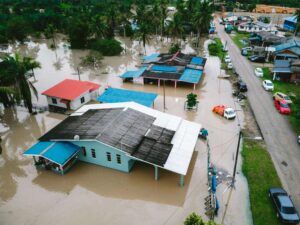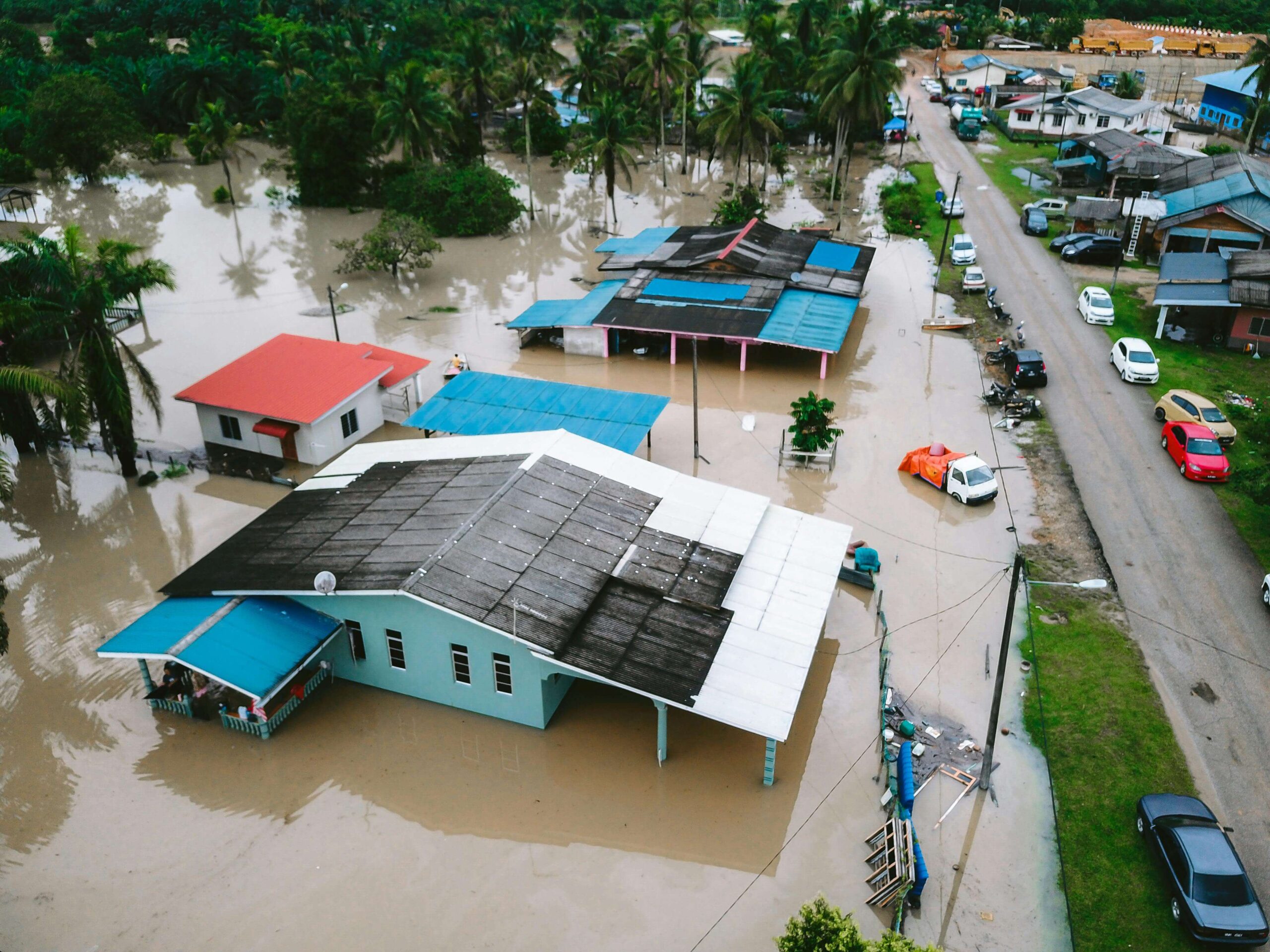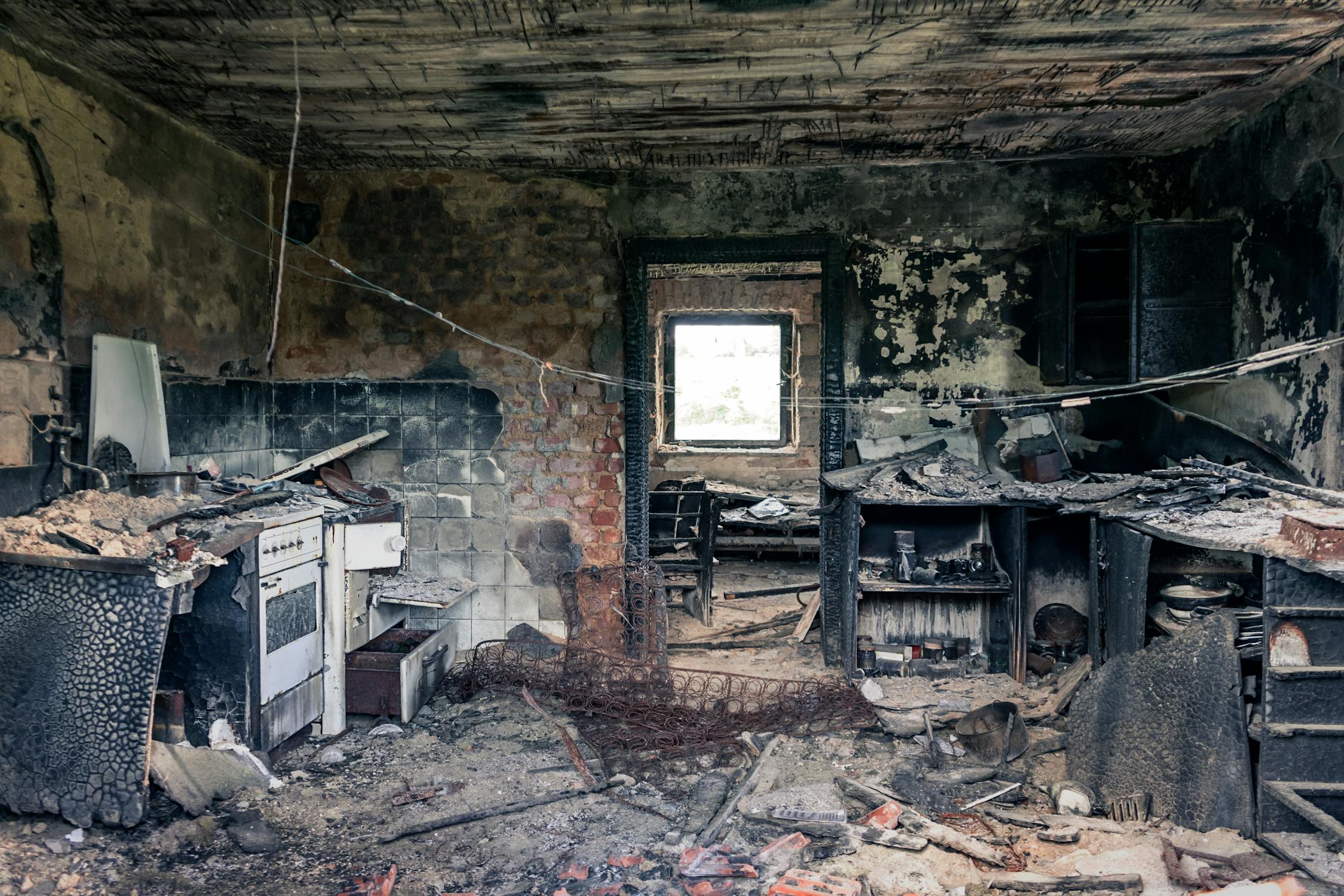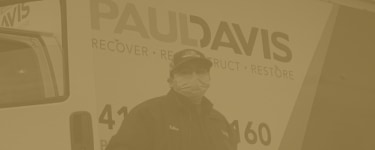As the seasons change, one constant remains—the need for vigilant and diligent water damage preparedness. Flood water removal and other water damage can be caused by melting snow, heavy rain, or hurricane-level storms. Businesses and homeowners need to know what to do and who you can turn to for help when water damage strikes. That’s why we here at Paul Davis of MidCentral New Jersey have put together these water damage cleanup tips for businesses and homeowners alike.
Expert Tips for Immediate Water Damage Clean Up
When water damage strikes your home or business, there’s an understandable degree of urgency that takes hold. After all, water damage events account for an average of $13,954 in damage each year. However, there are dangers to attempting water damage cleanup on your own, especially if a natural disaster or fire caused the water damage.
Professional water damage restoration experts categorize water damage to quickly assess and determine a course of action. The highest is category 3, which typically accompanies natural disasters and is identified by hazardous “black water.” Category 2 water damage, known as “gray water,” results from contaminated water leaking from appliances. The lowest level is Category 1 water damage, which comes from appliances and pipes using sanitized water, like sinks.
These categories only refer to the danger level of the water itself, not the extent of the damage. It’s possible to have extensive Category 1 damage that requires professional cleaning. That said, there are some steps you can take before and after water damage to mitigate the extent of the harm to your house:
- Move valuables: If you receive a warning of a potential flood event, begin moving valuable items to higher ground in your house to reduce the risk that flood waters impact those items.
- Turn off electricity: If you need to evacuate your home due to a storm or rising water levels, turn off power to your house to avoid the risk of fires. You should also turn off electricity and gas when you attempt to start water damage cleanup after Category 1 damage.
- Shut off main water valves and identify leaks: If safe to do so, attempt to visually inspect plumbing to find the source of the leak in your home. You may need to shut off water to certain parts of the home to identify the area first and the source second. If you’re unable to identify or fix the leak yourself, contact a local plumber to do so.
- Document the damage: Using your smartphone, take videos and pictures of the damage around the house. Your phone will automatically date and time stamp the photos/videos which will help in a subsequent insurance claim.
- Take valuables and other damaged items outside: If able, remove any damaged items from the house and place them outside to dry. You can also place damaged items in sealable plastic bags to prevent spores and bacteria from becoming airborne.
Signs It’s Time for Professional Water Damage Cleanup
How do you know it’s time for professional water damage cleanup efforts? Here are some signs you should contact a professional immediately:
- Mold: If you see mold growth or smell musty odors, it’s likely a more substantial problem than what we can identify with our senses alone.
- Staining: Light brown water rings or dark yellow water stains on ceilings or walls are surefire signs of water damage.
- Damaged walls, ceilings, or floors: Flaking, bubbling, or peeling of paint and wallpaper signal water damage. If you notice soft spots on walls or floors, that is also a sign you need water damage cleanup services.
- Increase in water bill: If your water bill jumps unexpectedly over a single month or a few months, that might indicate a leaking pipe somewhere in your building. A leak, even a small one, can create significant damage down the line.
When you notice these signs or a combination of them in your home or business, you should contact professional help because the damage is likely larger than it seems. At Paul Davis, we use equipment like infrared cameras to identify water damage that eludes our senses. Our cameras pick up unexpected temperature changes, clueing us in to where there’s water damage and where the source might be.
When we do find the damage and source, we have industrial pumps and antimicrobial treatments that we can use to quickly remove standing water and clean items to prevent mold growth. When homeowners and businesses attempt DIY water damage cleanup, it’s easy to miss the full extent of the damage and conduct an incomplete recovery effort.
Water Damage Can Create Specialized Scenarios
Water can pass through multiple points in a building and move throughout with ease. This creates unique water damage cleanup scenarios that require specialized teams, tools, and equipment.
Basement Flood Water Removal
Calling professional help is the best way to handle basement flood water removal and avoid further damage to the basement and home. Using industrial-grade vacuums and submersible pumps, we can clear out the standing water from the basement so recovery can proceed.
Once the water’s been cleared out, drying and dehumidifying the basement occurs. Since basements tend to be more moisture-prone and less ventilated than other areas, having professional-grade air movers and LRG dehumidifiers are essential to fully dry the basement.
Carpet Flood Water Removal & Drying
Water damage clean up can become complicated where carpets are concerned. For carpet flood water removal and drying, you need professionals with access to air movers, powerful vacuums, and antimicrobials. Together, these tools remove any standing water from the carpet, dry the carpet, and prevent mold from continuing to grow on the carpet.
Commercial Water Damage Cleanup
Water damage in commercial buildings presents a different set of challenges than in a residential setting. Having professional restoration experts on site can help your business recover faster. We can deploy the fastest drying technology available and ensure that staff and customers can return to spaces safely using air scrubbers before our departure. These devices purify the air both of mold and chemicals, so you can get back to business.
Residential Water Damage Cleanup
Our homes are our sanctuaries so water damage threatens the peace we feel at home. It can also put precious, irreplaceable heirlooms at risk of being lost forever. When you contact Paul Davis Restoration for water damage cleanup, we can also help with content restoration. Our team can identify and salvage the precious items that make your house a home.
Preventing Mold After Water Damage
Whenever there’s water damage, there’s likely to be mold in its wake. In some cases, we can see or smell the mold. However, just because our senses can’t detect it, doesn’t mean it isn’t present and dangerous.
- Assume mold is present: To prevent mold, start by assuming some items may already have mold present on them. If any items have been in water for two or more days, bring them outside as they have mold growing on them.
- Scrub hard surfaces: For hard items, walls, floors, stairs, and furniture, use a mixture of one cup bleach to one gallon of warm water to scrub them down and prevent mold growth.
- Dispose of uncleanable items: Some items may not be easily cleaned. For these, place in sealable bags outdoors and contact a professional content restoration specialist for further assistance.
What to Expect for Water Damage Cleanup Costs
Water damage cleanup costs may be covered through your homeowners or business insurance policies. However, you may still want to know what to expect in terms of costs. In short, water damage cleanup costs vary depending on the following factors:
- Cause of damage: The underlying cause of the damage may impact the other factors in addition to the cost of the damage. In some cases, the cause may be a minor leak that is easily fixed, whereas a natural disaster may have higher costs.
- Extent of damage: Damage that’s localized to one room or one floor will typically cost less to fix than damage that has spread throughout an entire building.
- Length of damage: Unaddressed hazards or standing water left for days often creates more damage than causes spots within seconds. The more time water’s been left to soak into walls, floors, and ceilings, the more extensive the restoration process.
Trust Paul Davis for Rapid Reliable Cleanup
Water damage is the second most common source of property damage in the nation. Whether from storms, sewage, or plumbing, water damage can happen anywhere and at any time. That’s why Paul Davis is here to provide 24/7 emergency services and our 30-minute rapid response window. When water damage strikes, don’t waste precious time with unreliable providers—trust us to restore your home or business like the damage never even happened. Call Paul Davis of Mid-Central New Jersey to get started now.







